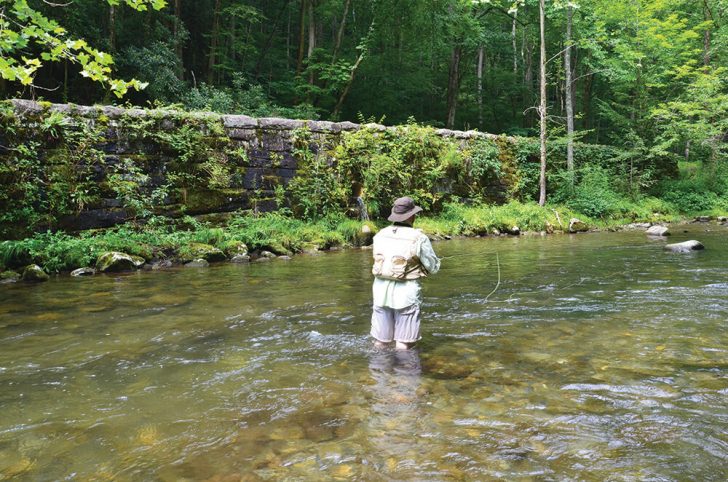(An abbreviated excerpt from Flyfisher’s Guide To North Carolina & Georgia)
North Carolina’s Oconaluftee River has a multiple personality disorder. Its headwaters fall from an elevation of more than 5,000 feet via a little creek called Beech Flats Prong high in the Great Smoky Mountains National Park. Beech Flats gains flow from multiple tributaries and becomes the Oconaluftee in a more than 8-mile run through the national park.
With the influx of Bradley Fork at Smokemont Campground, the “Luftee” is one of the larger flows in the GSMNP. Above Bradley Fork, the river is small and steep and home to small and beautiful wild trout. Below Bradley Fork, it is one of the most easily accessible and overlooked opportunities in the park.
Downstream of Smokemont, a buddy and I once stood on the elevated bank and watched a pod of a half-dozen 10- to 12-inch rainbows in a flat blue pool feeding calmly on caddis. That was enough to get us excited. I dropped in downstream of them and began a slow approach, gently moving into casting range to avoid spooking fish in glass-slick water. I was stripping line to cast when my buddy, who was still spotting from above, began pointing and making strange muffled sounds. I didn’t find out until later that I had kicked up a very large brown trout, which moved to the head of the pool and then disappeared. It had scattered the smaller fish in the process.
It taught me that it pays off to be patient and watch the water before making a move in the Oconaluftee. U.S. 441 is hard on its banks, making for extremely easy roadside access, yet big fish live there. They are smart due to the fishing pressure they receive, which is pretty limited considering how easy it is to get there.
The ’Luftee flies under the radar for a couple reasons. A lot of anglers drive length the river in search of more secluded destinations. And, the Oconaluftee within the Eastern Band of Cherokee Indians’ Qualla Boundary draws attention away from the Oconaluftee on the national park. The river takes on its next personality when it is joined by Raven Fork and enters Cherokee lands.
By this point, it is a big river. Cherokee maintains some of the highest fish densities in the east through extremely heavy stockings of rainbow, brook and brown trout. The fishing pressure can be enormous. Still, fishing can be good, and it’s a great place to introduce a youngster to trout fishing.
Flyfisher’s Guide To North Carolina & Georgia is 218 pages of extensively researched information on the area’s best trout fishing. It includes more than 40 full-color maps, driving directions, GPS coordinates to access points and tips and tactics. It is available on Amazon, and signed copies are available by contacting the author at nsc8957@gmail.com.
